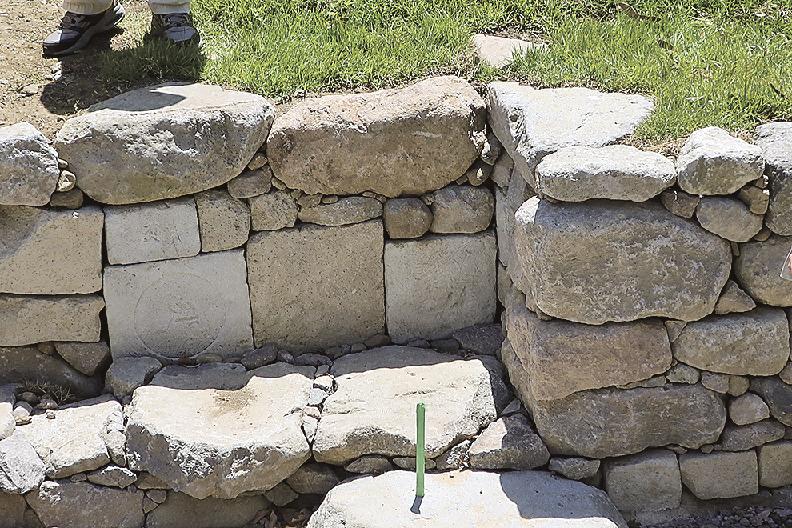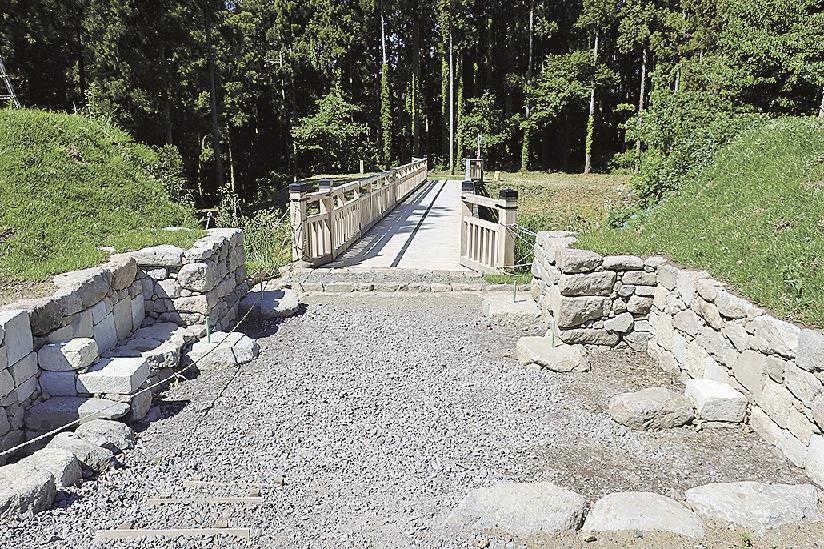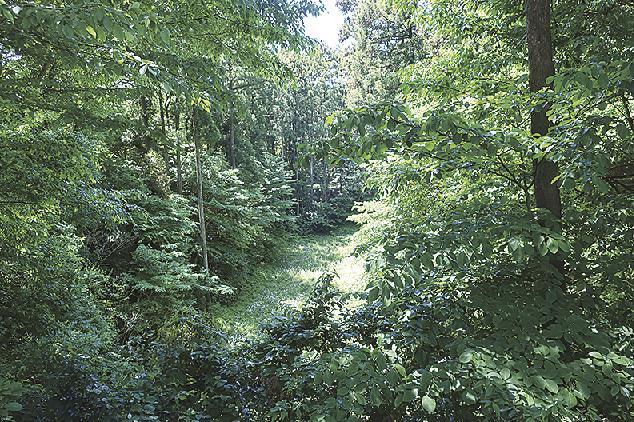Minowa Castle, which served as the stage for battles in Ueno Province (present-day Gunma Prefecture) during the Sengoku period, is in the process of being restored to its former appearance. As part of the Takasaki City Castle Ruins Preservation and Maintenance Project, the restoration of the stone wall at ``Nishitoraguchi'' leading in and out of the main enclosure has been completed. This is said to be the first initiative in Japan to use both glass fiber reinforced cement (GRC) and natural stone to recreate the stone wall. A gate is also planned to be installed on the stone wall, which is likely to attract more attention from history buffs.

The Honmaru West Koguchi Stone Wall has been restored
Minowa Castle was built around 1500 by the local ruling family, the Nagano clan. Nagano Narimasa (1491-1561) used the castle as his base to defend against the invasion of Takeda Shingen, making it famous as a historical castle of the Joshu Sengoku period. After the fall of the Nagano clan, it fell into the hands of the Takeda, Oda, Hojo and Tokugawa daimyo. Ii Naomasa, who entered the castle in 1590 under the Tokugawa clan, carried out extensive renovations, using many stone walls, but in 1998 he moved his headquarters to Takasaki Castle and the castle was abandoned.

Restore the stone wall in the field. You can see the replica of the stone tower on the left.
The preservation and maintenance project is restoring the castle from the Ii Naomasa period. Minowa Castle is “Tekakushiki Hirayama Castle”, taking advantage of the terrain of hills, valleys and marshes, and has a series of “kuruwa” defense areas surrounding the main keep and ninomaru. Many history buffs become repeat visitors, captivated by the grandeur of ruins such as Koguchi, the earthworks and Horikiri. “We have received feedback from people saying, ‘It’s great to be able to change the appearance every time you visit (because of the preservation project)’,” said a person in charge of the Bureau’s Cultural Properties Protection Division. Board of Education.

Image of castle ruins (courtesy of Takasaki City)
“The appearance of the castle changes with each change of castle owner, and we are working to develop the castle while responding to circumstances such as a lack of materials,” said Akira Tomizawa, a representative of the locally active Higashiagatsuma Castle History Research Group. “By visiting the castle ruins, you can catch a glimpse of how they were formed.”

The large pit in front of the main enclosure is nearly 10m deep. According to research, at that time, it was apparently almost twice as deep as it is today.
In restoring the Honmaru Nishi-Toraguchi stone wall, the city undertook the project through multiple revisions in order to faithfully reproduce its appearance at that time, as determined through excavations and other research.

Finished image of Komamon (courtesy of Takasaki City)
Stone walls can be divided into ``nozami'', ``uchikomihagi'' and ``kirikomihagi'' depending on the level of processing. According to excavation research, the stone walls of Minowa Castle were made of unprocessed natural stones stacked on top of each other and filled with cobblestones in the gaps. Originally, it seems that river stones from the Haruna Shirakawa River, which flows west of the castle, were used, but since the stones could no longer be mined, andesite from the quarry was used instead.
During the investigation, a large number of stones reused from stone pagodas such as the Wujin Temple were unearthed. “Of the approximately 180 stones, more than 50 were made from stone pagodas,” the Cultural Properties Protection Department said. The reuse of stone pagodas can be seen in castles across the country, but it is said that it is rare to see them used in large quantities for the stone walls in Kokou.
The city has been undertaking a "challenging initiative" (Cultural Properties Protection Division) to allow visitors to experience these features of the castle. A replica of the stone pagoda was created using GRC by taking molds from excavated rocks and reusing them for other purposes. Sanskrit characters were engraved to create an authentic feel, and natural stones were stacked based on drawings and photographs from the excavation survey. The casting and production of the replica will be carried out in 2021 and 2022. The stone wall was built in 2013. The total cost was 40 million yen over three years.
At the foot of the wooden bridge connecting the stone wall and the moat, the foundation stone of what is believed to be the one-story Korai Gate was discovered. Construction will begin later this year on the Komamon Gate, which will feature a teppo-sama (teppo-sama) and other features atop the stone wall. Construction is expected to take several years, according to the person in charge of the Cultural Properties Protection Office.
On May 18, the city held an information session about the completed stone wall, attended by about 200 people. “I’m really looking forward to the completion of Komamon. After it’s finished, I want to visit again to commemorate it,” said one excited attendee.
Inside the castle remains a monument with Matsuo Basho's poem, ``Summer grass and soldiers are traces of dreams.'' It won't be long before ``Traces of dreams'' regains its former appearance.
Invite partners to watch the activities of Pacific Group Co., Ltd.
FanPage: https://www.facebook.com/Pacific-Group
YouTube: https://www.youtube.com/@PacificGroupCoLt






